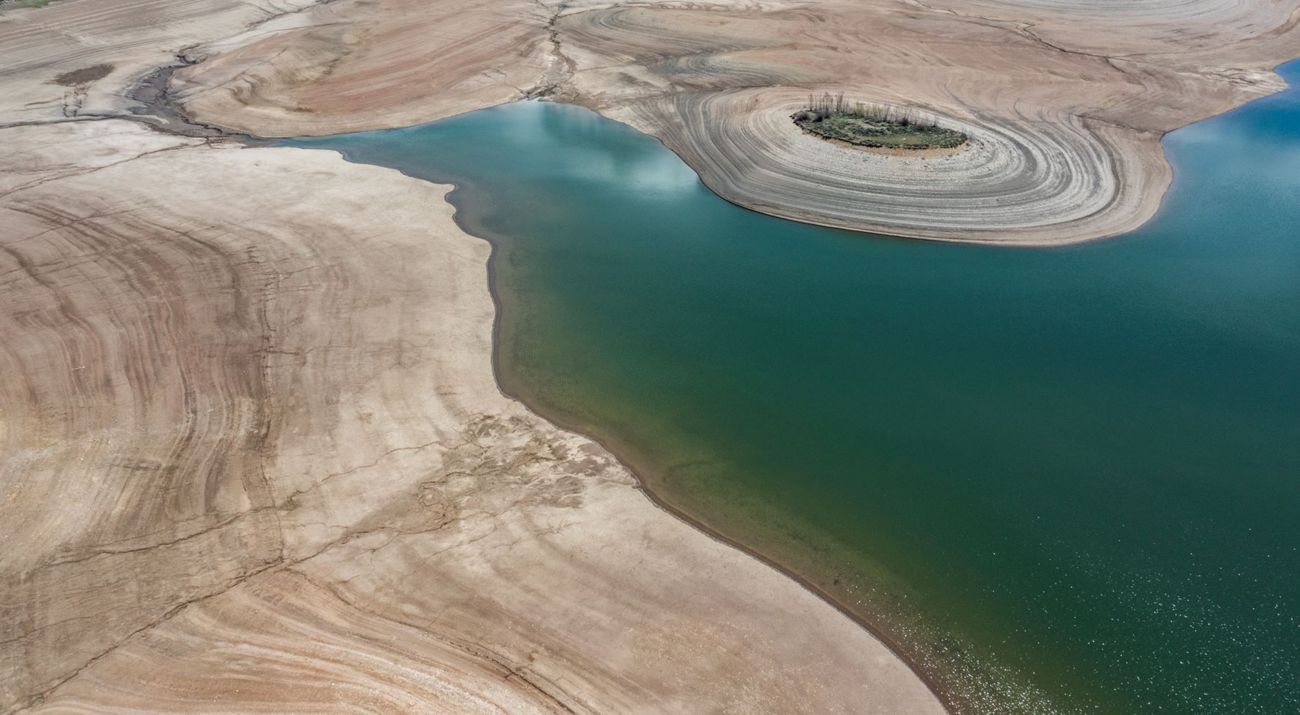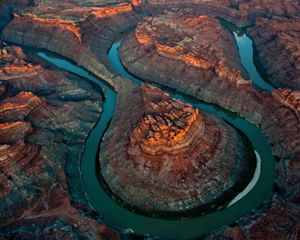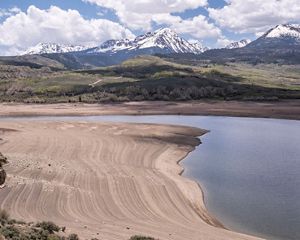Charting a Future for the Colorado River
The Colorado River Basin is in uncharted territory. How can we come together to build resilience in a hotter and drier future?
The Colorado River Basin—which supplies 80% of the water that Coloradans use—is ground zero for climate change in the United States. The Southwest is seeing a historic mega-drought and the Colorado River's flows have declined by 20% over the last century. Looking ahead, scientists predict that the river's flows could shrink by as much as 31% by 2050.
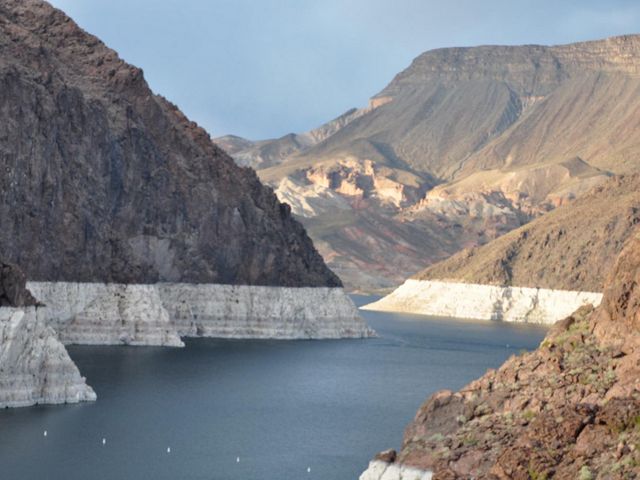
Water levels in Lake Powell and Lake Mead, the two major reservoirs that store the Colorado River’s water, are down to 34% of their capacity.
We are feeling the effects of climate change today, in our own backyards. In the summer of 2021, the Bureau of Reclamation declared a Tier 1 water shortage for the first time, triggering mandatory water cutbacks for Arizona, Nevada and Mexico in 2022. This poses a huge threat to water supplies for the people, agriculture, and businesses that depend on this river, as well as the fish and wildlife.
The good news is there are things we can do to help the Colorado River Basin. These strategies include reducing water use, modernizing infrastructure, improving forest health, utilizing natural landscapes to minimize flood damage and purify and store water, and improving stream and river health. We need to invest in solutions that will not only help us better manage our water supplies in the short term, but also build climate resilience in the long term.


How can Colorado help improve water security?
With over 20 years of experience in the Colorado River Basin, The Nature Conservancy (TNC) knows first-hand how important partnerships and collaboration are in charting a sustainable and resilient future.
Together, we have addressed water challenges across Colorado, such as helping create the Yampa River Fund, upgrading irrigation infrastructure on one of the largest water diversions on the Yampa River, partnering with local water utilities on forest restoration in the South Platte watershed, and working with farmers and ranchers across the state to creatively and collaboratively manage water to handle shortages. We're also partnering with Tribal Nations and Indigenous communities to co-create solutions for water that advance their voice, choice and actions.
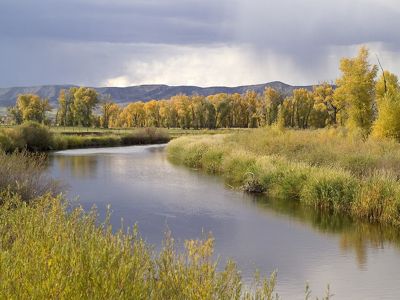
This year, we’re joining together with groups around Colorado to celebrate our state’s water, dedicated to the idea that “It all starts here." Water ‘22 is about Coloradans from all corners of the state recognizing the value of water and growing in understanding of how water connects all people, upstream and downstream, past, present and future. In this initiative, we are using education, awareness, amplification and insight from diverse voices, and more to encourage conservation and protection. Collectively, we must ensure our water meets all needs of today and for future generations.
Five things you can do for the Colorado River:
1. Know where your water comes from. Water has to travel surprisingly far to reach your faucet. If you’re reading this, the chances are that some (or all!) of your water comes from the Colorado River.
2. Use less water—every drop counts! Use water-saving devices and reduce your outdoor water use in the summer. Need other ideas?
We can't save nature without you
Updates from the conservation world & how you can get involved.
Sign up for Nature News· Shorten your shower by two minutes and you’ll save up to 150 gallons per month.
· Turn off the water while brushing your teeth and save up to 150 gallons per month.
· Run your clothes washer and dishwasher only when they are full and save up to 200 gallons a month.
· Fix that leaky faucet or running toilet and save up to 300 gallons per month.
· Use native and drought-tolerant plants to landscape your home and water them in the early morning or evening to reduce evaporation. Water-wise landscaping can greatly reduce water use—and lower your water bill.
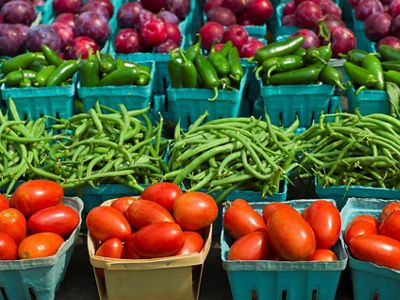
3. Choose your food wisely. Consider buying food grown locally and sustainably, using water-efficient practices.
4. Support organizations that protect our rivers. Learn more about organizations like The Nature Conservancy that protect and restore our rivers.
5. Encourage friends and family to take action! Inspire others to care for our lands and rivers, explore the outdoors, and try new adventures like rafting, fishing, and hiking.
We must come together to create innovative, collaborative solutions that work for everyone—including farmers and ranchers, cities, Tribal Nations, outdoor recreation, and industry. It’s that spirit that we must channel now more than ever to accelerate our efforts to build climate resilience in the Colorado River Basin.
